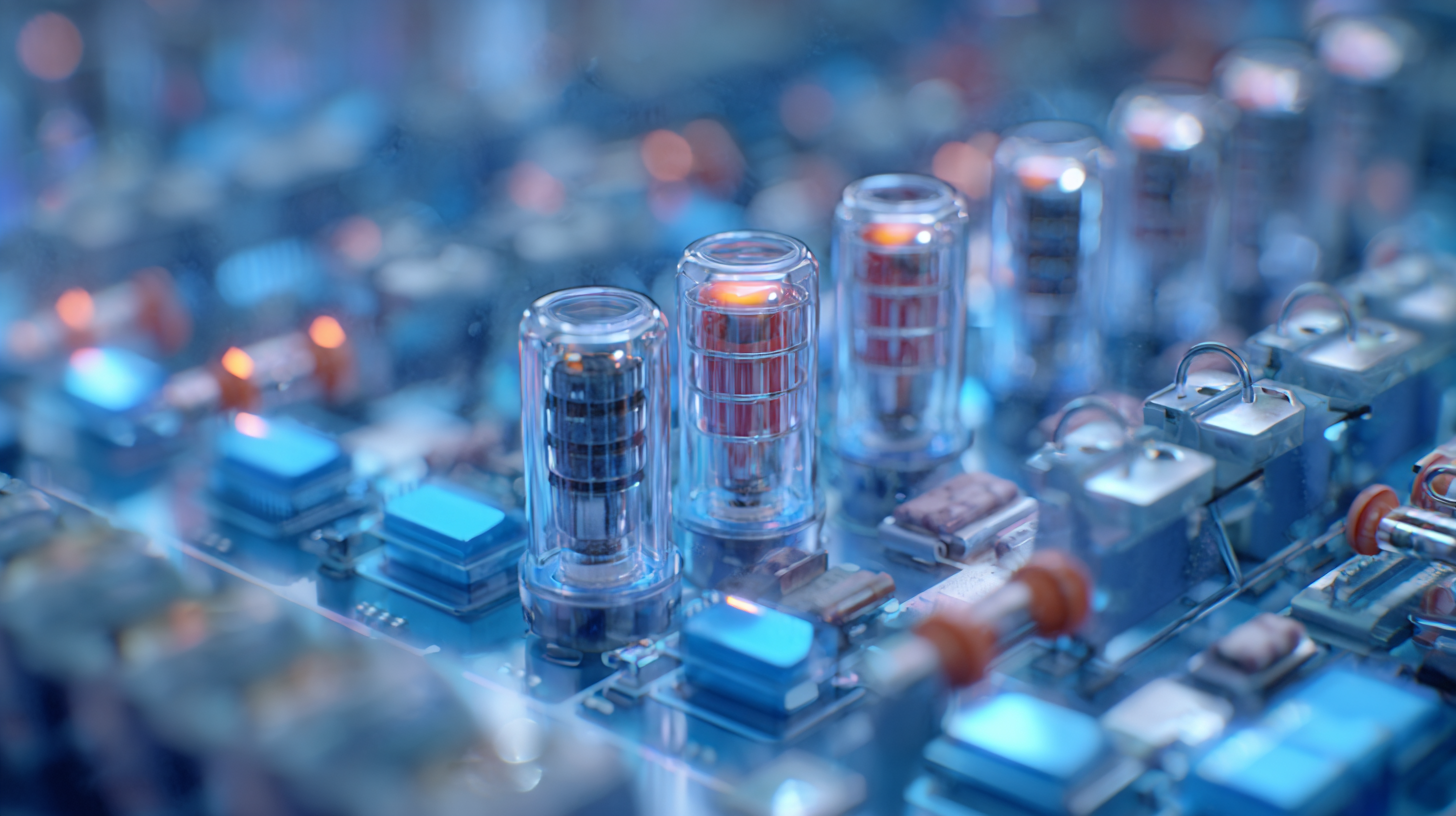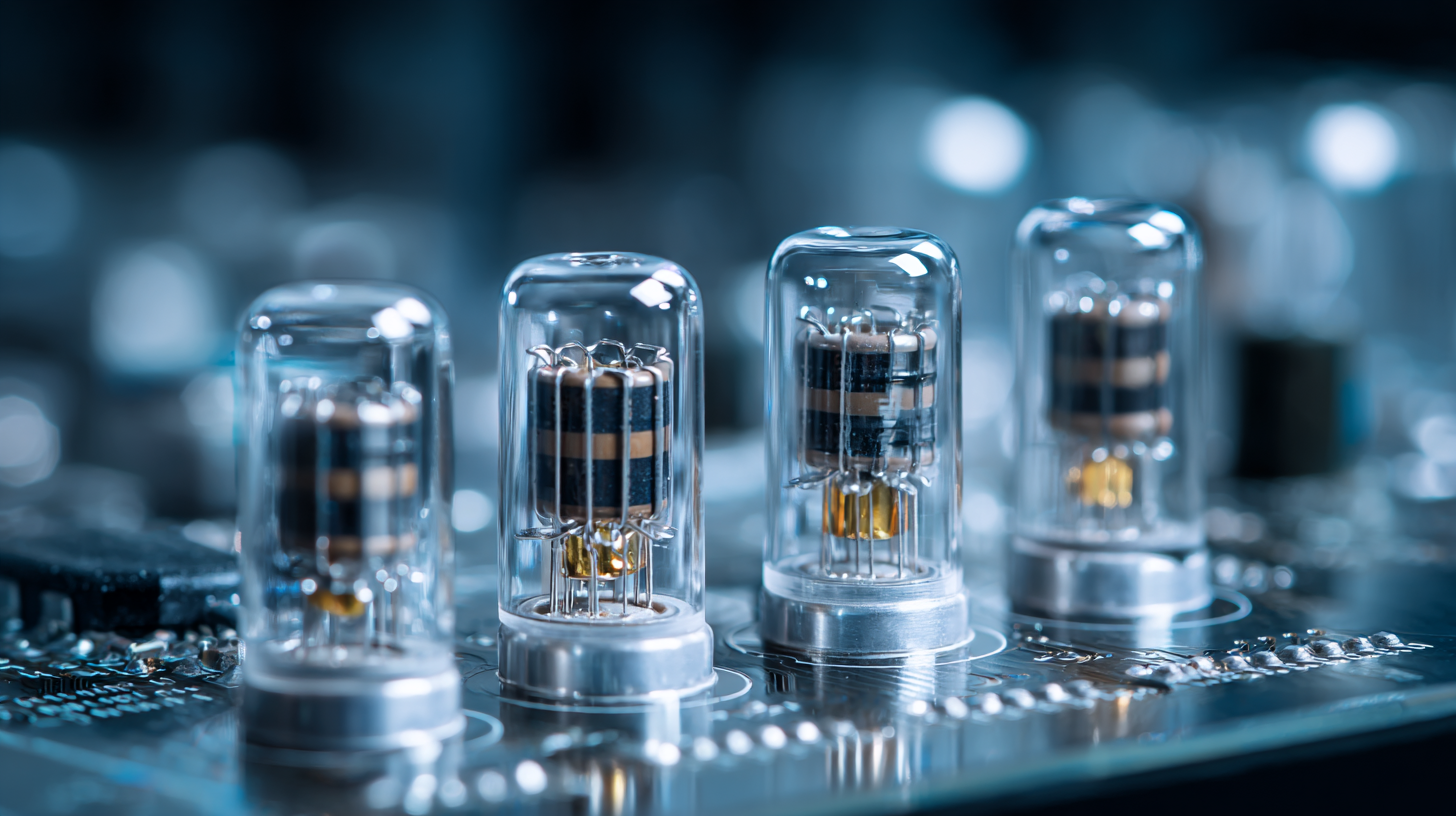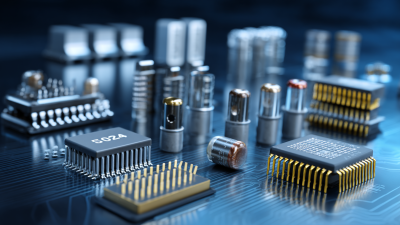News / Blog
Exploring the Future: How Capacitors Can Transform Sensing Technology
The rapid advancements in technology are continually reshaping the landscape of sensing applications, with capacitors as sensors emerging as a transformative force in this evolution. According to a recent report by MarketsandMarkets, the global sensors market is projected to grow from USD 160 billion in 2020 to USD 250 billion by 2026, driven by the increasing demand for smart devices and automation. Capacitors, traditionally viewed as mere components for energy storage, have begun to show immense potential in sensing applications due to their unique ability to detect changes in electrical fields and capacitance variations. This capability not only enables novel sensing mechanisms but also enhances the performance and accuracy of various systems, particularly in the Internet of Things (IoT) domain. As industries continue to innovate, the integration of capacitors as sensors will likely play a pivotal role in developing next-generation technologies, making them indispensable components for future sensing solutions.

The Role of Capacitors in Modern Sensing Technology Advancements
Capacitors play a pivotal role in modern sensing technology, enabling the development of advanced devices that are increasingly integrated into everyday applications. In the capacitive position sensors market, advancements in both linear and rotary sensor types illustrate how capacitors enhance precision and reliability across various industries. By leveraging non-contact and contact types alongside digital and analog output capabilities, these sensors are becoming vital for applications ranging from industrial automation to consumer electronics.

Moreover, the rise of micro and nanostructured capacitive sensors showcases the transformative potential of capacitors in reducing size while increasing functionality. These innovations facilitate the creation of compact devices that can seamlessly capture and process physical phenomena, leading to improved image sensors that are core to digital imaging devices. As the demand for more sophisticated sensing solutions grows, the role of capacitors in enhancing the performance and accuracy of these technologies becomes increasingly significant, establishing a foundation for future advancements in various fields.
Key Benefits of Capacitor Integration in Sensors
The integration of capacitors in sensing technology is set to revolutionize various industries, bringing numerous advantages that enhance performance and efficiency. According to a recent report from MarketsandMarkets, the global sensor market is expected to grow from $193.23 billion in 2021 to $308.12 billion by 2026, with a significant contribution from advanced capacitive sensors. This growth is driven by the demand for precision and reliability in applications such as automotive, healthcare, and smart devices, where capacitors play a crucial role in signal processing and noise reduction.
One of the key benefits of integrating capacitors into sensors is their ability to improve measurement accuracy. A study by the IEEE highlights that utilizing capacitive sensing can increase sensitivity by up to 50%, which is especially valuable in environments where small changes in the measured variable can lead to significant implications. Additionally, capacitors can enable miniaturization of sensing devices, leading to lighter and more compact solutions, a critical factor in wearables and IoT applications. This transformative potential not only enhances operational capabilities but also paves the way for innovation in sensor design.
Innovative Applications of Capacitors in Sensing Devices
Capacitors have emerged as pivotal components in the evolution of sensing devices, pushing the boundaries of what these technologies can achieve. Their ability to store and release electrical energy efficiently allows for more precise measurements in various applications, from environmental monitoring to health diagnostics. One innovative application is in capacitive sensing, where the charge stored in capacitors can detect minute changes in proximity, pressure, or humidity. This technology can enhance smartphones and wearables with touch input sensitivity and health tracking features.
Moreover, the integration of capacitors with emerging technologies like IoT and smart sensors is paving the way for novel applications. For instance, they can facilitate remote environmental sensing by powering small devices that monitor air quality or temperature. Additionally, flexible capacitors in wearables can enable real-time monitoring of physiological parameters, enhancing personal health management. As the demand for smarter, more responsive sensing technologies grows, capacitors will undoubtedly play a crucial role in shaping future innovations in this field.
Exploring the Future: How Capacitors Can Transform Sensing Technology - Innovative Applications of Capacitors in Sensing Devices
| Application | Capacitor Type | Sensing Technology | Advantages | Challenges |
|---|---|---|---|---|
| Proximity Sensors | Ceramic Capacitors | Capacitive Sensing | High sensitivity, compact size | Environmental interference |
| Touch Screens | Film Capacitors | Capacitive Touch Technology | User-friendly, multi-touch capability | Limited in wet conditions |
| Humidity Sensors | Electrolytic Capacitors | Relative Humidity Measurement | Cost-effective, wide range | Temperature sensitivity |
| Temperature Sensors | Tantalum Capacitors | Temperature Sensing | High stability, long life | Higher cost |
| Gesture Control | Polymer Capacitors | 3D Gesture Recognition | Innovative user interfaces | Complex calibration |
Future Trends in Capacitor Technology for Enhanced Sensing Solutions
Capacitor technology is poised to play a pivotal role in the evolution of sensing solutions, particularly in the realm of gas sensors and humanoid robotics. As industries increasingly seek to integrate artificial intelligence with multifaceted robotics, the capabilities of capacitors become critical. Enhanced capacitor designs can contribute substantially to the sensitivity and accuracy of sensors, allowing for real-time gas detection and analysis, which can ultimately lead to more effective environmental monitoring and safety applications.

Future trends in capacitor technology emphasize miniaturization and efficiency, which align with the growing demand for compact and powerful sensing devices. Innovations such as flexible capacitors and those with higher energy densities can empower sensors to operate across a wider range of conditions and applications. This is particularly relevant in the context of humanoid robots, which require refined sensor technologies to enhance human-robot interaction and adaptability in dynamic environments.
As capacitor technology continues to advance, it will be instrumental in shaping the future of sensing technologies, reinforcing the interconnectedness of electrical components and intelligent systems.
Challenges and Solutions in Capacitor-Driven Sensing Innovations
The advancement of capacitor technology plays a pivotal role in the evolution of sensing devices. However, several challenges hinder the optimal integration of capacitors in sensing applications. One primary issue is the trade-off between size, capacitance, and performance. As the demand for miniaturized sensors grows, achieving high capacitance in a compact format remains a significant hurdle. Engineers must innovate to develop materials and designs that allow for higher capacitance values without compromising the physical dimensions.
Moreover, environmental factors such as temperature and humidity can adversely affect capacitor performance, leading to inaccuracies in sensing applications. To combat this, researchers are exploring advanced dielectric materials and hybrid capacitor designs that enhance stability and reliability under varying conditions. Implementing robust calibration techniques and adaptive algorithms can also mitigate these issues, ensuring that sensor systems remain accurate and effective in real-world scenarios. Through continued innovation and collaboration, the potential of capacitor-driven sensing technologies can be fully realized, paving the way for smarter and more responsive systems.
Exploring the Future: Capacitor-Driven Sensing Innovations
Related Posts
-

Why Electronic Capacitors Are Essential for Modern Electronics
-

The Future of Smart Devices How Electronic Components Are Revolutionizing Technology
-

How to Navigate the Best Electronic Components Website for Your Project Needs
-

Unlocking Innovation: The Future of Electronic Components in Smart Technology Development
-

Unlocking the Future: Innovative Electric Switches Transforming Smart Home Technology
-

Exploring Market Trends for Electronic Components at the 2025 Canton Fair in China
